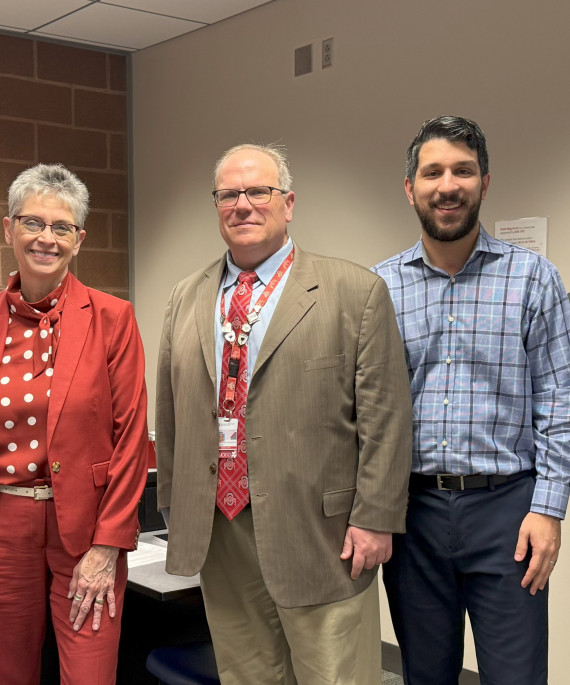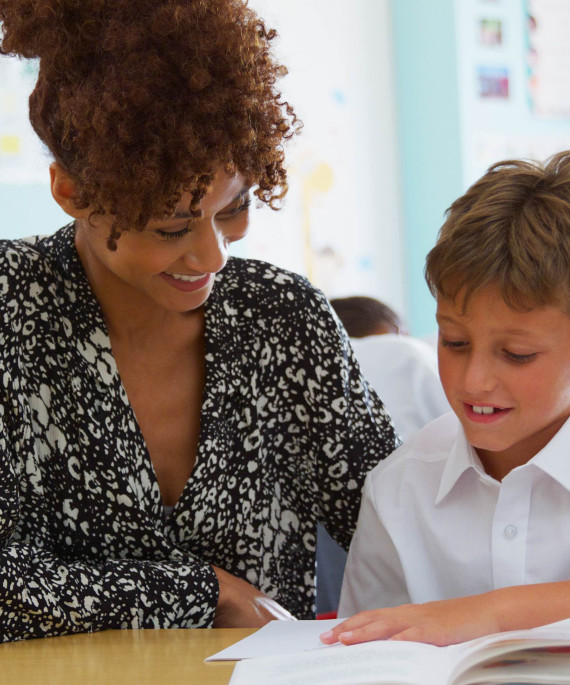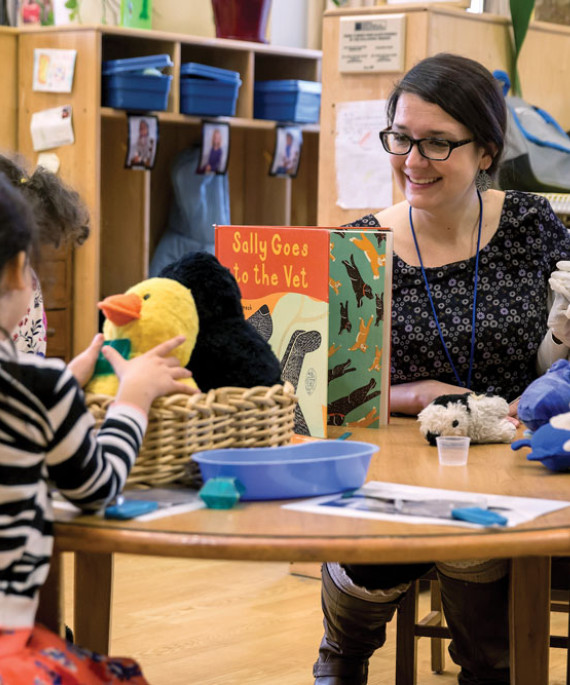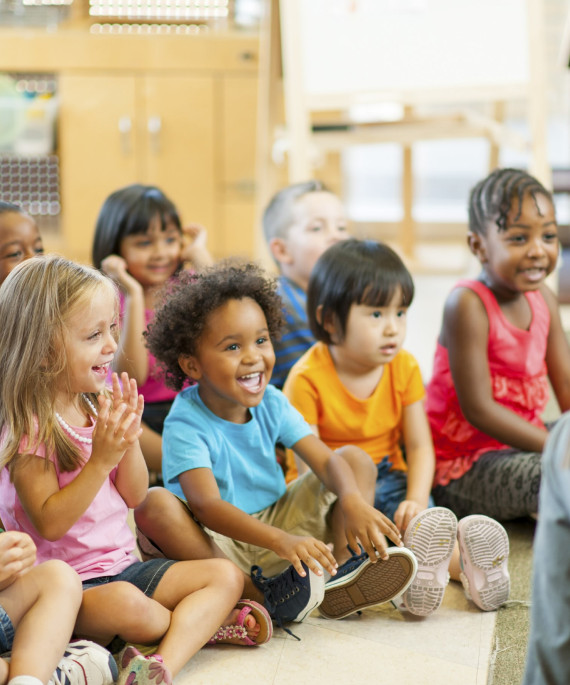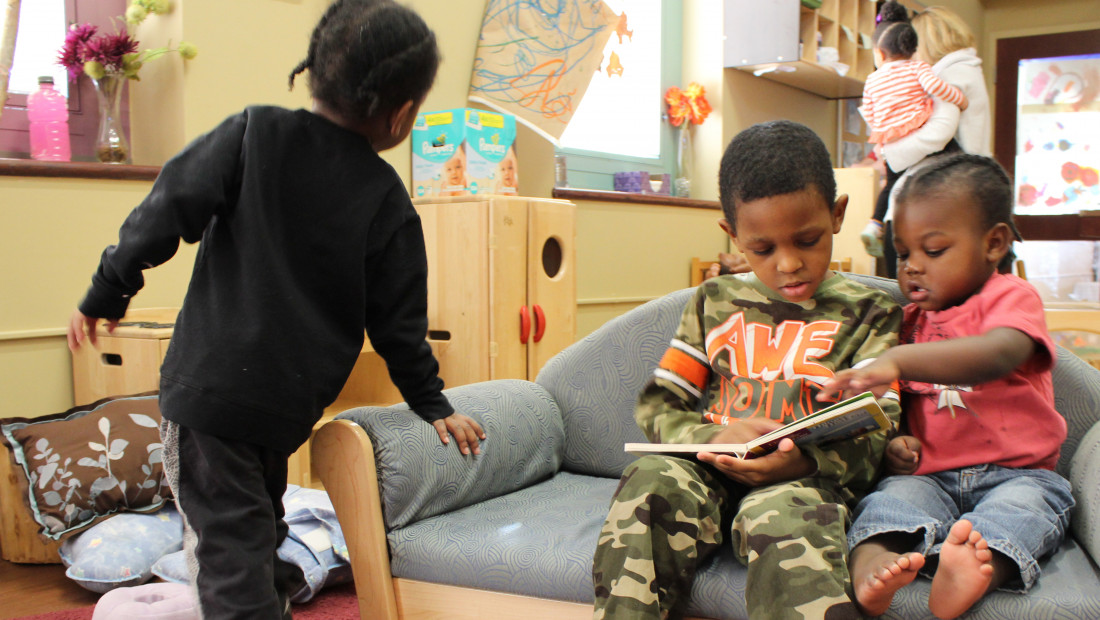
K'Shawn, center, and brother Ki'Wann take in a good book at the Schoenbaum Family Center. Brother Ki'Rick, 3, left, wasn't into reading about trucks.
Schoenbaum Center helps children have much to say
Five-year-old K’Shawn plopped onto a pint-sized sofa next to his baby brother, Ki’Wann, at the A. Sophie Rogers School for Early Learning in the Schoenbaum Family Center. As they leafed through a book about modes of transportation, K’Shawn demonstrated his superior skill of identifying trains, buses and race cars. Little Ki’Wann was awestruck.
As he should be. When K’Shawn first came to the school, at 3, he was barely verbal, his mother, Sonya Hatton, said.
“He had no confidence. He would try to say something, and if you didn’t understand the first two times, he’d shut down and not say anything,” she said.
Eighteen months later, K’Shawn has plenty to say.
“We see this a lot in the classroom,” Master Teacher Sara Bradley said. “Children come in who might have a speech delay or just not much exposure to language. Then you put them in a classroom with 19 other children and at least three (trained) adults. The language development from that type of exposure goes through the roof.”
But K’Shawn’s and other children’s continued progress may be at risk because of disruptions in funding for summer programs.
How Schoenbaum helps kids
All children attending the school are screened by a speech-language pathologist. K’Shawn received small-group intervention from speech-language undergraduate students and individualized attention from teachers.
“When we examine our classrooms, we look at how many times the teacher goes back and forth in a language exchange with the child,” Principal Anneliese Johnson said. “You want children elaborating on what they’re saying, to engage in conversation, to know how to ask questions, to know how to follow up when they don’t understand.
“These teachers are so wonderful at balancing the individual needs of instruction with their children,” Johnson said. “So at times they’re just a listener, and saying things like, ‘What then? How else could you have done that?’ Other times they’re really explicitly modeling sentence structure and vocabulary.”
To reinforce that progress, teachers work to develop language and literacy strategies for home and school, which might include using sign language and language cards.
“We even have our own school language that every family gets access to,” Bradley said. “‘It’s tricky’ when something is feeling difficult, or ‘I don’t like that,’” — a common phrase among these preschoolers.
The classrooms can be loud — like when K’Shawn and his friends tie on blanket “capes” to play Batman and Robin. Or when youngsters pull out colorful mats to practice yoga.
That dialogue — teacher to student, student to student, and student to teacher —promotes language and literacy skills which are the foundation of all future learning.
That’s why it’s critical that kids like K’Shawn and Ki’Wann continue to be enrolled. Federal, state and local covered the costs of their schooling . . . until now.

Funding cuts hurt kids
Johnson works diligently to secure grants so that students whose families qualify for support can attend year-round. But now, federal, state and local reductions and caps on education spending may affect their education. Most at risk are funds for summer tuition, particularly for children under four years old.
The disruption in learning could mean the difference between success or failure later in school.
“The thing that’s so wonderful about our program is the consistency. We can work on (language and literacy) throughout the whole summer, completely focus on it, and get them ready for the next step — kindergarten,” Bradley said.
For kids who might not have as much consistency at home, missing out on summer programming could be a big blow. Your Day of Giving donation can ensure that many kids, not just K’Shawn and his little brothers, can reach their full learning potential.
All donations up to a total of $10,000 will be matched.

